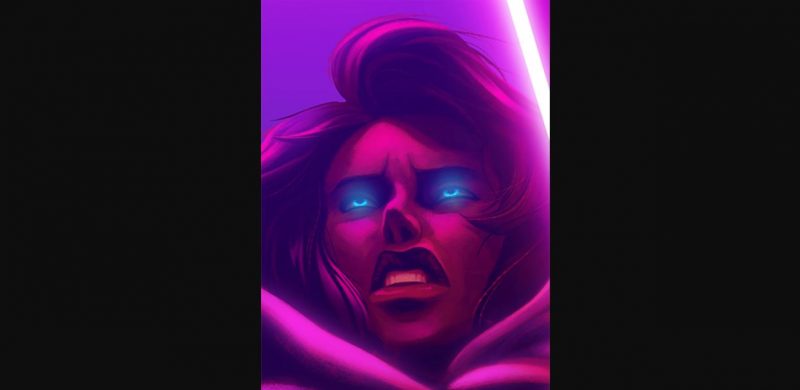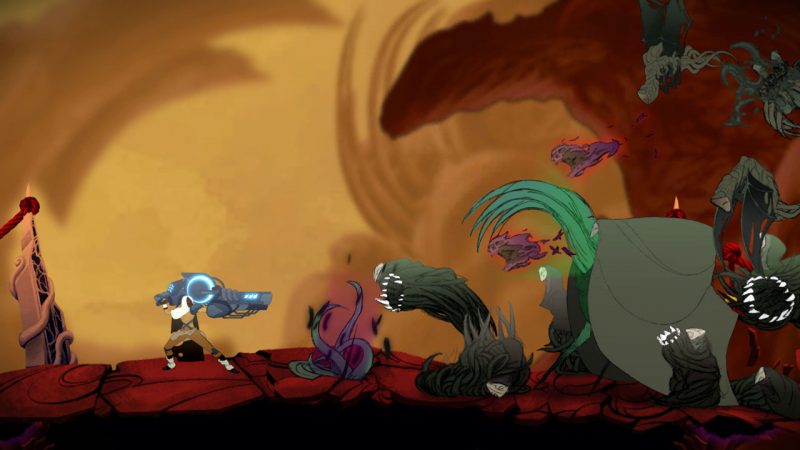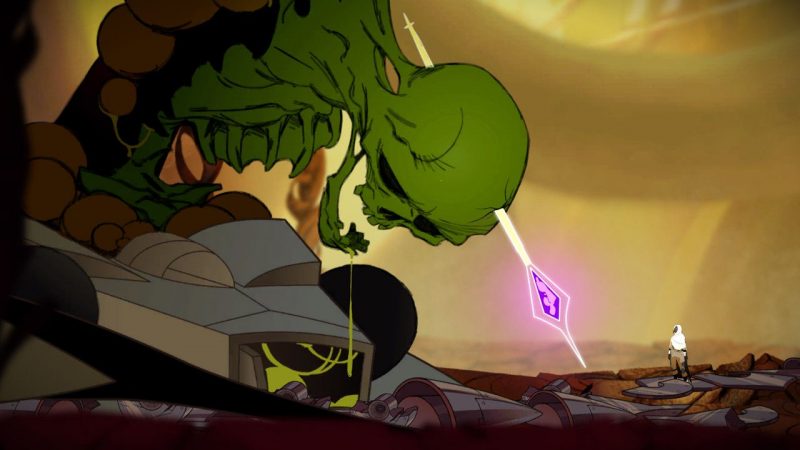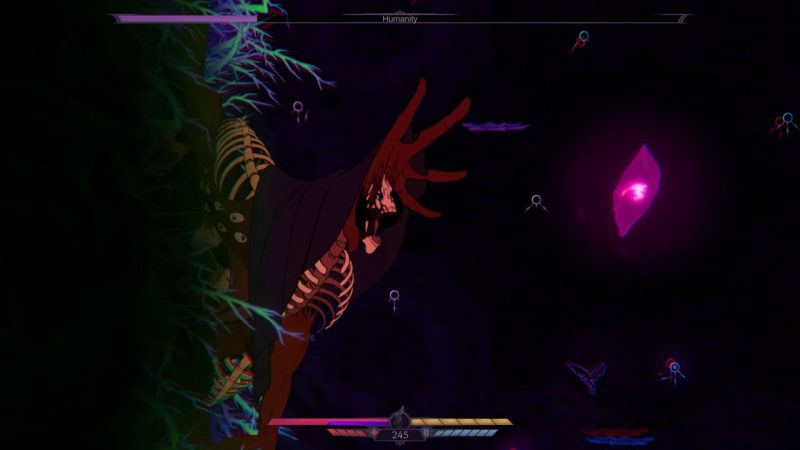We recently published the first half of our interview with Thunder Lotus. Here’s the second, in which we discuss how Sundered is inspired by the fictional universe of H.P. Lovecraft’s horror.
Last time, Thunder Lotus shed light on the creation of Jotun — their action-packed, top-down adventure game — and how Norse myths influenced its development and gameplay. Now, we’ve got them back on the line to discuss their most recent title, Sundered, and how it is based on H.P. Lovecraft’s terrifying fiction. Even if you haven’t read his work, you’re probably familiar with the most famous figure Lovecraft invented — Cthulhu — and his vision of a more cosmic and existential strain of horror. In fact, his writings have crept into our collective consciousness in numerous forms over the years, including video games. In Thunder Lotus’ case, it has taken on the shape of a genre-bending roguelike/metroidvania hybrid. Here’s what their level designer, Ian Lafontaine, had to say about adapting Lovecraftian themes in their game.

Why a metroidvania/roguelike for H.P. Lovecraft’s work in Sundered?
While designing Sundered, I always felt like the roguelike mechanics were the ones that owed most to Lovecraft’s legacy. Regenerating part of the world every time you die means that you cannot ever truly know the world; it keeps changing and twisting, just out of your grasp. Monsters can appear anywhere, meaning that places you thought were safe quickly turn into dangerous traps. If the overall theme of the game is to face impossible odds, we drew upon Lovecraft and roguelike mechanics to build that nearly insurmountable part.
The essence of a metroidvania is to become gradually stronger, have more and more tools at your disposal, and get to know your environment intimately. This all boils down to the player exerting more and more control on the outside world, which is a very “un-Lovecraftian” notion. It is also a key component to facing said impossible odds That is not to say that we did not draw upon Lovecraft when crafting the various metroidvania mechanics in the game. While the player grows more powerful and becomes able to overcome the monstrous hordes that had him desperately fighting for his life earlier, we did work to make the player’s control tenuous at best.

Part of that lies in the fact that all choices in the game are permanent, irrevocable. You are changing your character every time you “level up,” every time you acquire an ability, when you corrupt a skill, and/or destroy an elder shard. Those are changes you cannot back out from, and many of those choices have to be made with incomplete information.
Sure, we could have explained to players what would happen when they struck that ability shrine holding an elder shard. Some players complained about that, but we wanted players to feel both dread and excitement during this moment; we wanted them to take a leap of faith and just do it, while knowing it’s probably not necessarily a “good’’ thing. The whole screen starts twisting, colors split from objects, and ominous sounds cover everything else. You know something is up, but there’s no dipping your feet in the water and then changing your mind.

Given the games inclusion of the “Shining Trapezohedron,” Sundered obviously draws influence from Lovecraft’s, “The Haunter of the Dark,” but instead of featuring a male hero like the story, you all created a female character, Eshe. Why?
While the inclusion of the Shining Trapezohedron and the pivotal place it holds in the story is indeed a nod to ‘’The Haunter of the Dark,” that is not the story we chose to tell. In the same way that Marvel and a lot of other fictional universes often reference Thor, Odin, or Mjollnir without being about Norse mythology, what we most sought to emulate in Lovecraft’s works was the feel of them rather than their individual components.
As such, I do not personally think that any of the themes we explored in Sundered, deeply influenced by Lovecraft as they were, are intrinsically male. The concept of being unequal to a task but buckling down to try and do it anyway or of being confronted by things so outside our capacity to understand as to unhinge us, none of this leans more towards males or females.

I do not feel that our story would or could have been made better by the simple inclusion of a male protagonist, and offering both a male or female character is simply not something we could afford to do animation-wise. With that said, I believe that the social context in the early 1900s and the role men and women were expected to play in those times are radically different from those today. And since our audience lives in the 21st-century and that we, as a team, believe that men and women are and should be equal, we opted to go down that path instead.

Are there other elements from Lovecraft’s writing (especially the Cthulhu Mythos) that also crept into Sundered?
To me, the biggest inspiration we drew from Lovecraft weren’t the creatures, the elder gods, or any single artifact. Lovecraft’s works defined a new genre in horror I’ve often seen referred to as cosmic horror. Horror of things so far outside our ability to grasp and comprehend as to render anyone insane. Horror of things unseen, unknown, being all around us. Horror at the realization of our insignificance in the face of everything out there, not arrayed against us, but simply uncaring or unmoved by our feeble attempts at impacting events. We tried to build these concepts, these feelings, into the game’s very mechanics to make a world that feels hostile, that does not wait on the player, where danger can strike at any time, from anywhere. We wanted the players to feel overwhelmed and have to bull their way through and carve a path anyway.

Can you tell us a little bit about the next chapter in Thunder Lotus’ own story? What’s happening next?
That would be telling! We have something very exciting on the burner at the moment, and should be ready to reveal it to the world later this year! Stay tuned!

Though they wouldn’t let on, we know Thunder Lotus’ next game is sure to impress. We can’t wait to see what they base it on. As a studio, they set themselves apart from the crowd in the way that they respect and pay tribute to great stories of yore, and what’s even more impressive is the ingenious way in which they make the lore their own. Don’t take our word for it, though: check out Jotun and Sundered and experience them firsthand!


